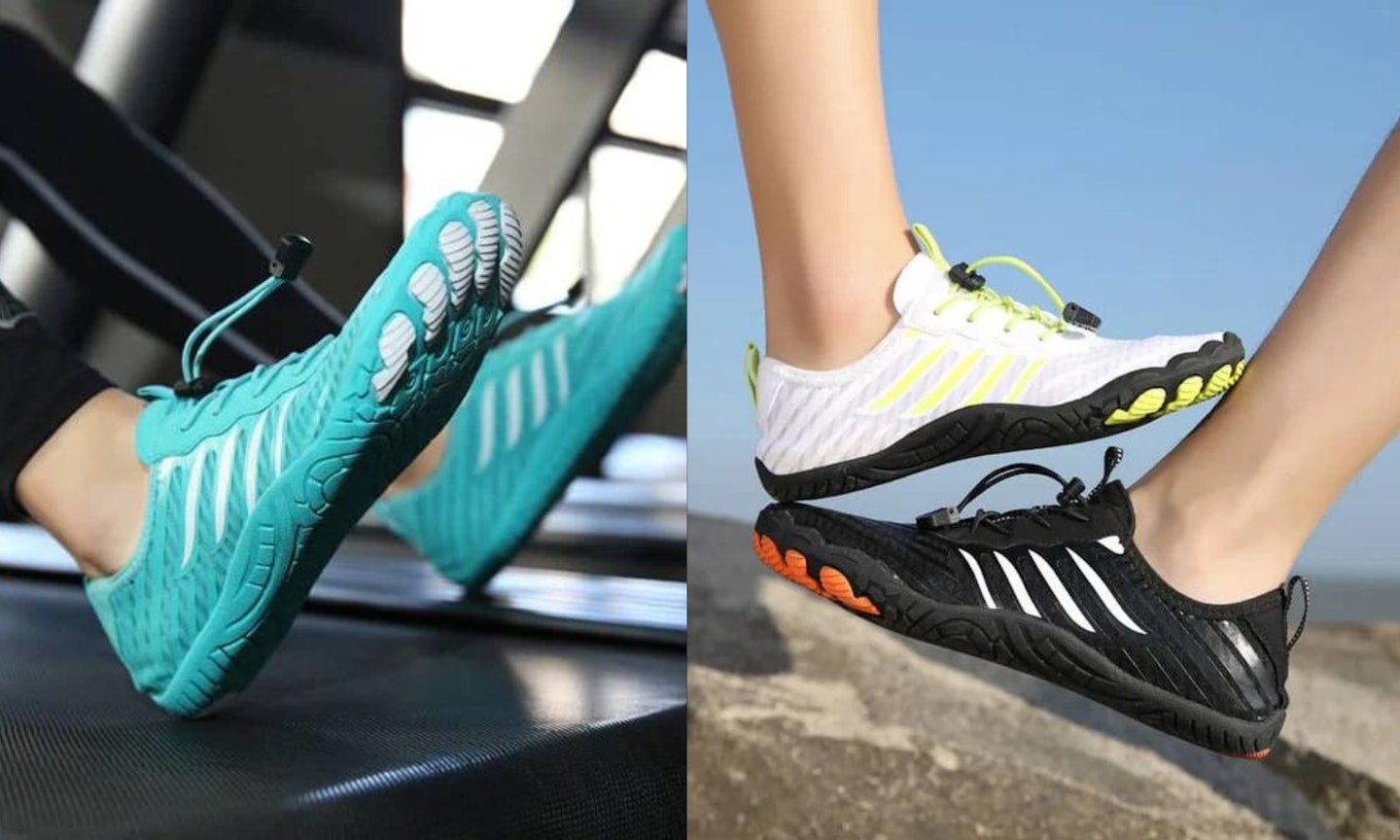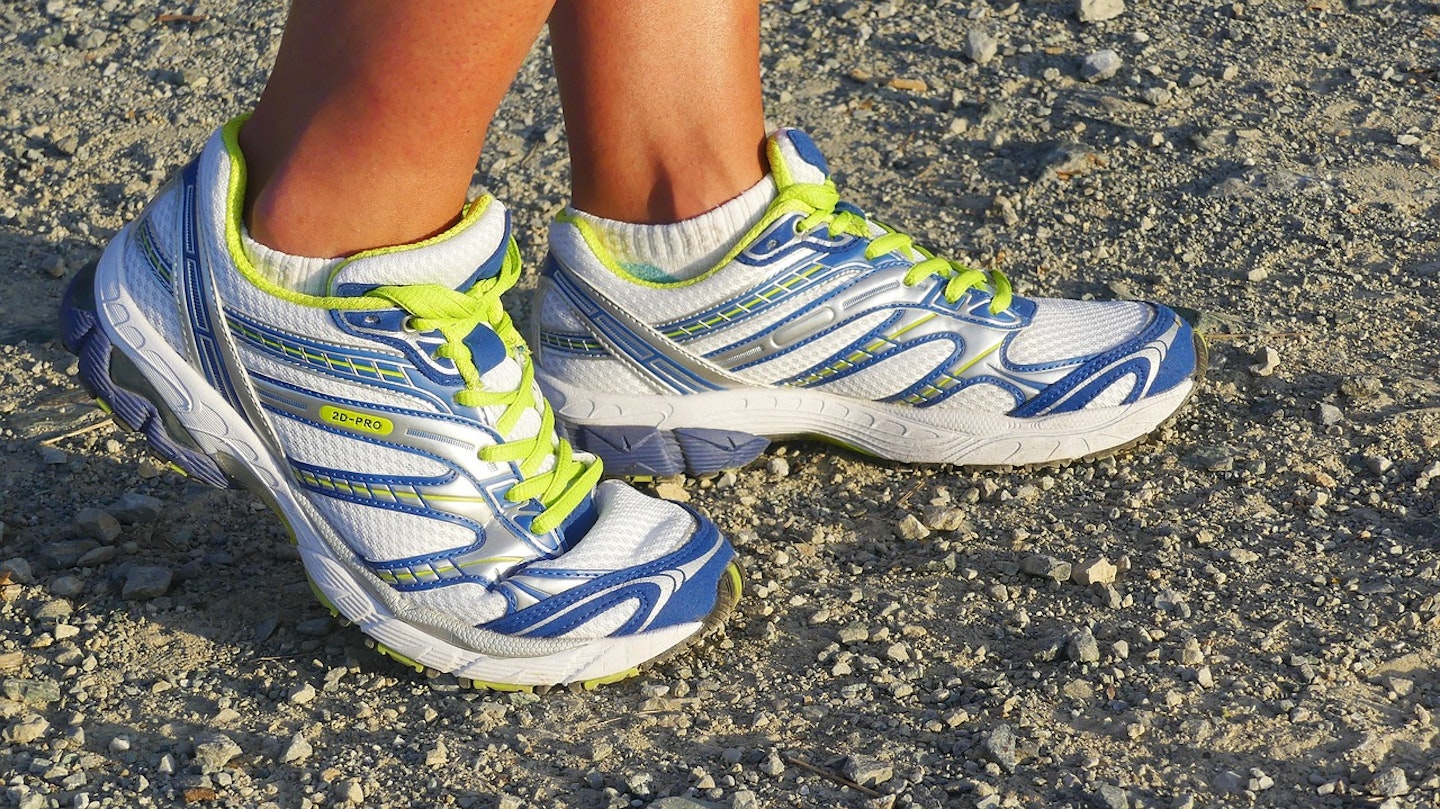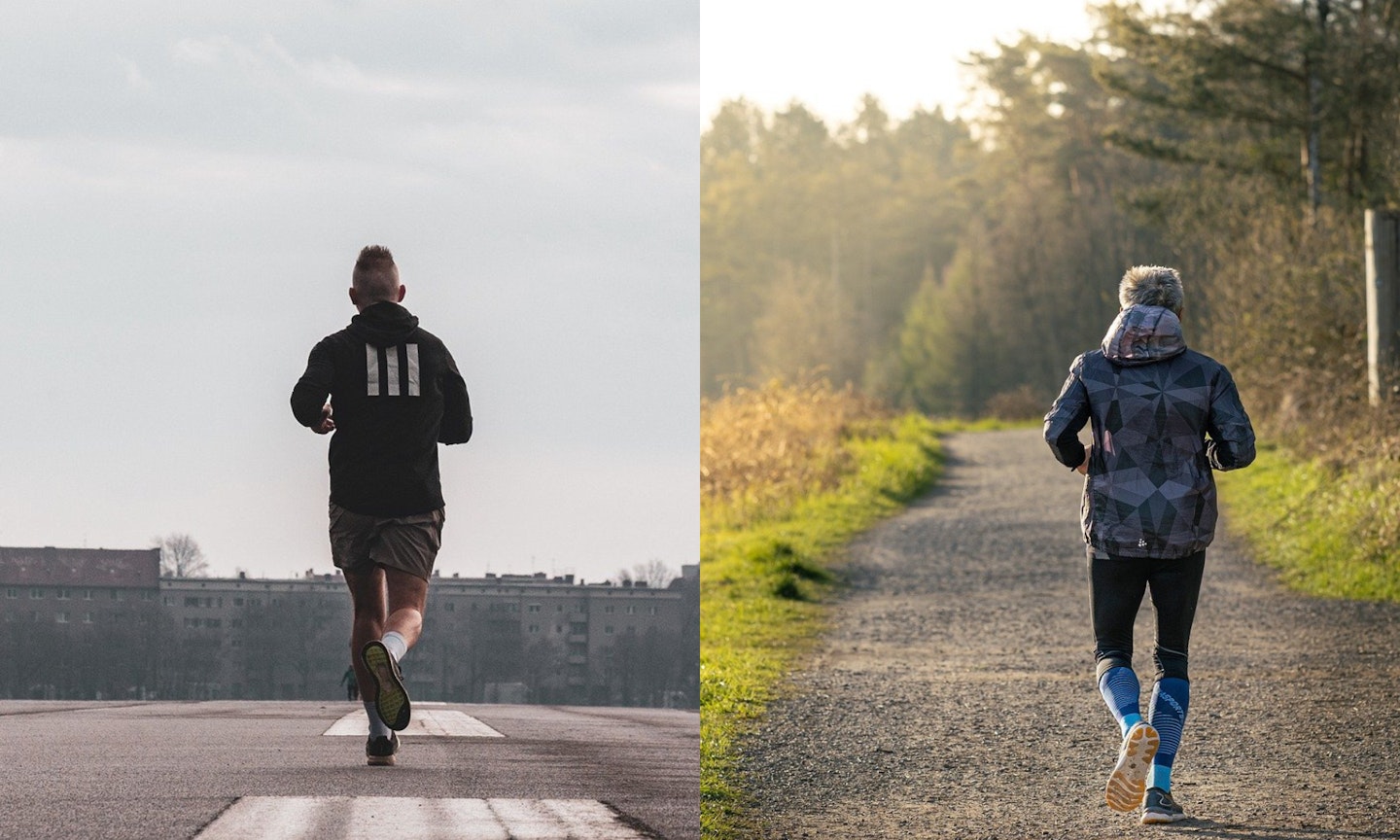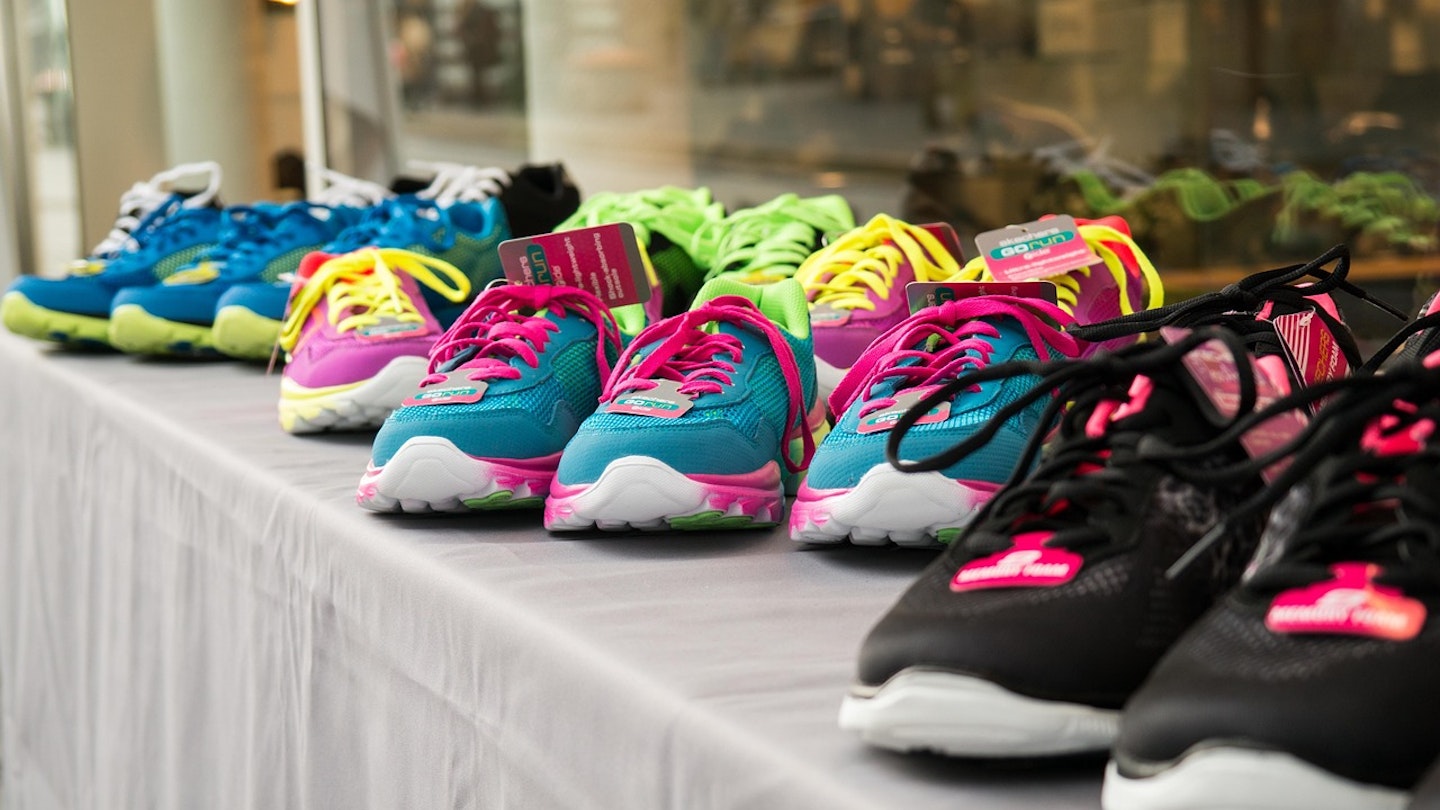Finding yourself a pair of the best possible running shoes is important for a number of reasons. You can’t neglect comfort, nor can you ignore how the shoe’s design will impact performance and your own running style. There are various elements at play that’ll determine these outcomes, you’ve got heel-toe drop to consider, as well as cushioning, and shoe weight. Ultimately, the decision can come down to siding with either a maximalist running shoe or a minimalist running shoe.
The two types of running shoes have some pretty stark differences, but there’s not really a right or wrong answer. Picking between maximalist and minimalist running shoes in an entirely personal endeavour, both builds offer their own advantages and drawbacks depending on the kind of runner you are. This is why it’s vital to choose the right one, and to understand what you’re getting for your money.
What are minimalist running shoes?

You can get a rough idea of what sets apart these two types of running shoes just by their names, but what does minimalist running shoe actually mean? Well, minimalist running shoes are a far simpler approach to the running shoe build. They offer a raw running shoe experience, stripped away of any imposing cushioning and additional support.
The scientific intention behind this minimalist variation is to encourage a low impact gait. What this means is that they promote a natural running style where you’re more likely to land on your mid foot or forefoot, as opposed to your heel. For many runners, this can have a range of health and performance benefits, this is something we’ll touch on a little further on.
You can spot a set of minimalist running shoes either by the fact that they’re labelled as barefoot shoes or by just inspecting them and seeing that they have very limited cushioning. There will always be a lack of midsole and heel cushioning, you should also find very little heel-toe drop. Minimalist running shoes will typically have under 8mm of drop, most barefoot shoes will have zero.
What are maximalist running shoes?
Maximalist running shoes have everything that minimalist running shoes strip away. You’re getting a tall shoe stack with very high cushioning throughout the shoe. These types of running shoes assume the running style for you, but promise far better performance by granting more spring to your strides. Differently to minimalist running shoes, maximalist ones encourage you to land on your heels and become a heel striker.

The idea is that the maximalist running shoe acts as a platform. Each stride is meant to be explosive and purposeful, there’s far more motion control with these types of running shoes too. The additional cushioning and support found in maximalist running shoes makes them well suited for long distance runs or journeys that might take you across unforgiving terrain.
The heel-toe drop of maximalist running shoes has typically always been high. Although, modern iterations have gradually become more modest, with 0-6mm being more common. The Hoka 6 running shoes are a perfect example of maximalist, high cushioning running trainers. Instead of there being a steep angle from the heel to the toe, many maximalist running shoes prioritise a thick carbon plate with heightened cushioning throughout the shoe.
What are the big differences?
The differences between maximalist and minimalist running shoes are significant, and they can affect your running experience in a few big ways. Both shoe builds will impact your running performance and your foot health.
Minimalist running shoes are mostly praised for their impact on foot health, they improve your connection to the ground while you run – this is otherwise known as proprioception. While minimalist running shoes do put slightly more stress onto your Achilles, wearing them will likely only aggravate pre-existing foot conditions, as opposed to being the catalyst for new ones. Wearing minimalist running shoes is not recommended if you suffer with plantar fasciitis, tendinitis, flat feet, bunions, or hammer toes. This is because when you wear minimalist running shoes, you very closely simulate running barefoot. Little support and cushioning make for harsher steps and strides, and this is no good if you have pre-existing foot issues.
On the other hand, maximalist shoes have been said to be able to alleviate certain conditions. Wearing these high cushioned, supportive running shoes may be able to help with metatarsalgia, capsulitis, neuromas, sesamoid injuries, and hallux limitus/rigidus symptoms. While they’re not a direct remedy, they can in some cases ease symptoms. We’d recommended checking with a health expert before buying a pair of running shoes if you suffer with any of these conditions.
Choosing the right running shoes

The choice between maximalist and minimalist running is an important one, but there are a couple of additional features and factors that you might want to consider too. Shoe preferences aren’t just about cushioning and support. Some running shoes have narrow mid foots, while others are built to be wider. Running shoes vary in neck height too, this is the edges of where you put your feet in. Some prefer a higher shoe neck, while others rather a lower neck design sitting closer to the shoe, this all comes down to personal preference.
We touched on this earlier, but it’s always worth buying your running shoes in accordance with where you’re going to wear them. Different running shoes accommodate different running settings, and that goes for both minimalist and maximalist running shoes. Most minimalist running shoes won’t be any good for trail runners, the ever-changing terrain and the risks that come with it mean cushioning and support are essential. Some maximalist running shoes that opt for thicker midsoles and a 4mm drop create a rocker effect. It eliminates bend across the metatarsophalangeal joints which can lead to pain, discomfort, and some conditions.
Minimalist running shoes don’t require any breaking in period, which is ideal for runner who want to get out there as soon as possible. For kinder, flatter terrains, minimalist and barefoot running shoes will be ideal, especially for those who want to stick to their own running gait.
Closing thoughts
If there’s anything you should take away from our little investigation, it’s that picking the right running shoes goes beyond your favourite brand, or a flashy colour scheme (though the New Balance FuelCell SuperComp v4's might disagree). Everyone runs differently, from the heel strikers to the mid foot and forefoot favourers. There’re the urban runners and the off-road adventurers, maximalist and minimalist running shoes cater for the needs of both.
Once you’ve figured out the kind of runner you are, and what you tend to look out for in your sports footwear, you’ll be able to make the choice between maximalist and minimalist running shoes.
Jack Barrell is a Tech and Fitness Writer for What’s the Best. He is invested in all things entertainment and keeps well up to date with the latest sports and exercise trends too. On his off days Jack can usually be found doing one of two things; lifting heavy weights – or watching his favourite Star Wars for the thousandth time.
